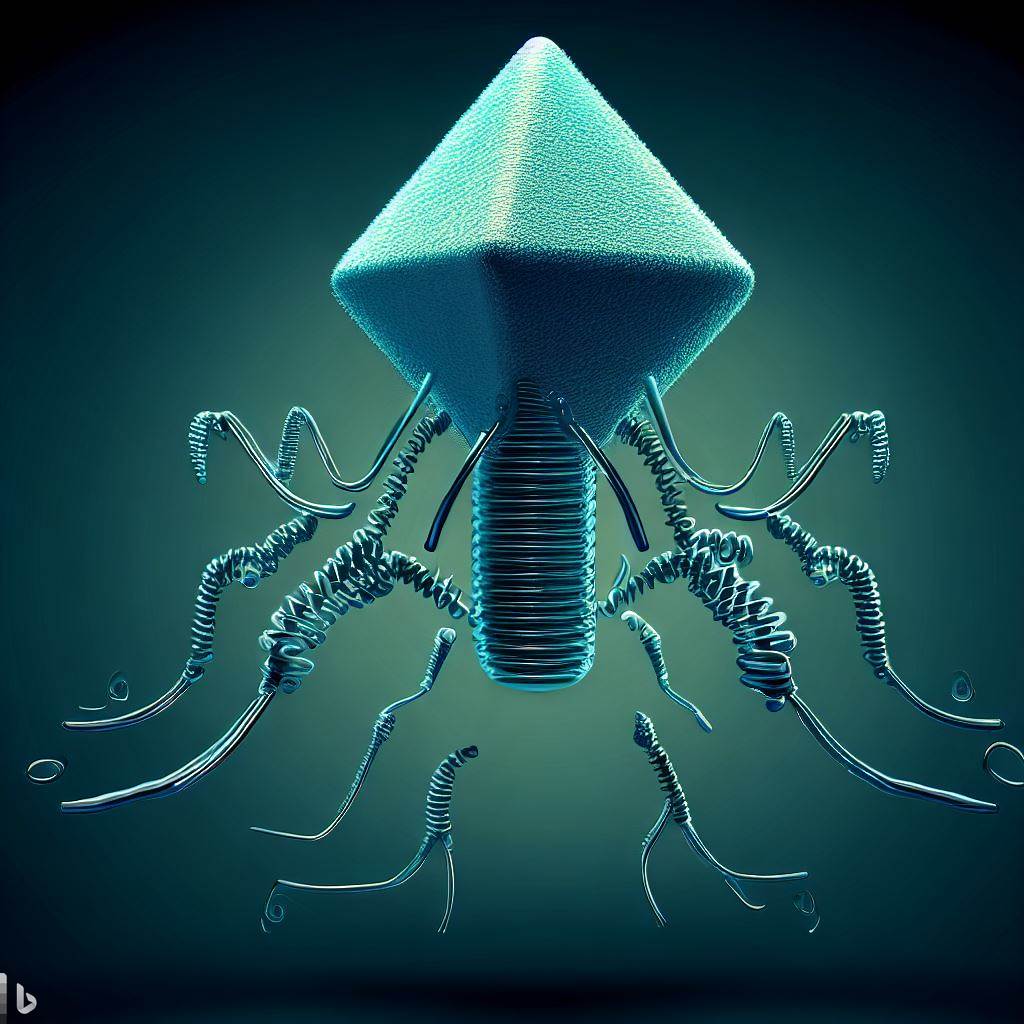In the intricate world of microbiology, where battles for survival are fought at microscopic scales, a remarkable group of viruses known as bacteriophages (or simply phages) reign supreme. These “viral assassins” have captivated scientists for decades, displaying a fascinating ability to target and destroy bacteria with unparalleled precision. In this article, we will embark on an exciting journey of discovery, delving deep into the world of bacteriophages, and exploring their structure, life cycle, and potential applications in medicine and beyond.
The Phage Phenomenon
Bacteriophages are viruses that specifically infect bacteria, employing them as hosts to complete their life cycle. Their name originates from the Greek words “bacteria” (meaning bacteria) and “phagein” (meaning to devour), which accurately describes their predatory nature. These tiny viral agents are abundantly present in our environment, inhabiting diverse ecosystems such as soil, water, and even the human body.
Structure and Diversity
Bacteriophages come in a variety of shapes and sizes, but most share a common structure. They typically consist of a protein coat called a capsid, which encapsulates their genetic material. The genetic material can be either DNA or RNA, depending on the phage type. Some phages also possess additional structures such as tail fibers or spikes, which enable them to attach to specific receptors on bacterial surfaces.
The Life Cycle of a Bacteriophage
The life cycle of a bacteriophage involves several distinct stages, each critical to its survival and reproduction. The process begins with adsorption, where the phage attaches to the surface of a susceptible bacterium. Following adsorption, the phage injects its genetic material into the bacterial cell, leaving the empty capsid outside. Once inside, the phage’s genetic material takes control of the bacterial cell’s machinery, forcing it to produce more phages. This phase is known as replication or biosynthesis. Eventually, the bacterium lyses (bursts open), releasing numerous progeny phages that can infect other bacterial cells nearby, thereby continuing the cycle.
Phages as Bacterial Assassins
Bacteriophages are adept at identifying and targeting specific types of bacteria. This characteristic makes them invaluable tools in the fight against bacterial infections. Phages possess a remarkable ability to recognize unique receptors on the surfaces of their host bacteria, ensuring they only infect their intended targets. This specificity is a stark contrast to antibiotics, which often kill beneficial bacteria along with harmful ones, leading to unintended consequences. By harnessing the natural power of bacteriophages, scientists can potentially develop highly targeted therapies to combat antibiotic-resistant bacterial infections.
Phage Therapy: A Promising Medical Frontier
Phage therapy, the use of bacteriophages to treat bacterial infections, is an area of intense research and development. The concept of phage therapy originated in the early 20th century, but its widespread use was overshadowed by the discovery and success of antibiotics. With the rise of antibiotic resistance, however, phage therapy has experienced a resurgence as a potential alternative or complement to antibiotics. Researchers are exploring various applications, including treating infections in wounds, the urinary tract, lungs, and gastrointestinal tract.
Beyond Medicine: Phages in Agriculture and Environmental Remediation
The impact of bacteriophages extends beyond medicine. In agriculture, researchers are investigating the potential of phages to combat bacterial pathogens that harm crops, reducing the reliance on chemical pesticides. Additionally, phages show promise in environmental remediation, where they can target and eliminate harmful bacteria in water bodies, improving overall water quality.
Challenges and Future Directions
While bacteriophages hold tremendous potential, several challenges need to be addressed. Phage therapy requires precise identification and isolation of suitable phages for each bacterial target, necessitating extensive research and development. Additionally, concerns such as phage resistance, potential side effects, and regulatory hurdles must be carefully evaluated and managed.
Bacteriophages, nature’s viral assassins, are awe-inspiring entities that have fascinated scientists for decades. Their ability to target and destroy bacteria with remarkable precision offers a promising alternative to conventional antibiotic treatments. As researchers continue to explore the immense potential of phages, we may witness a new era in the battle against antibiotic-resistant bacteria, paving the way for innovative medical treatments and a healthier, more sustainable future.
References:
- Abedon, S. T. (2019). Bacteriophage exploitation of bacterial biofilms: phage preference for less mature targets? FEMS Microbiology Letters, 366(2), fnz009.
- Dalmasso, M., Hill, C., & Ross, R. P. (2014). Exploiting gut bacteriophages for human health. Trends in Microbiology, 22(7), 399-405.
- Kutter, E., & Sulakvelidze, A. (Eds.). (2005). Bacteriophages: biology and applications. CRC Press.


